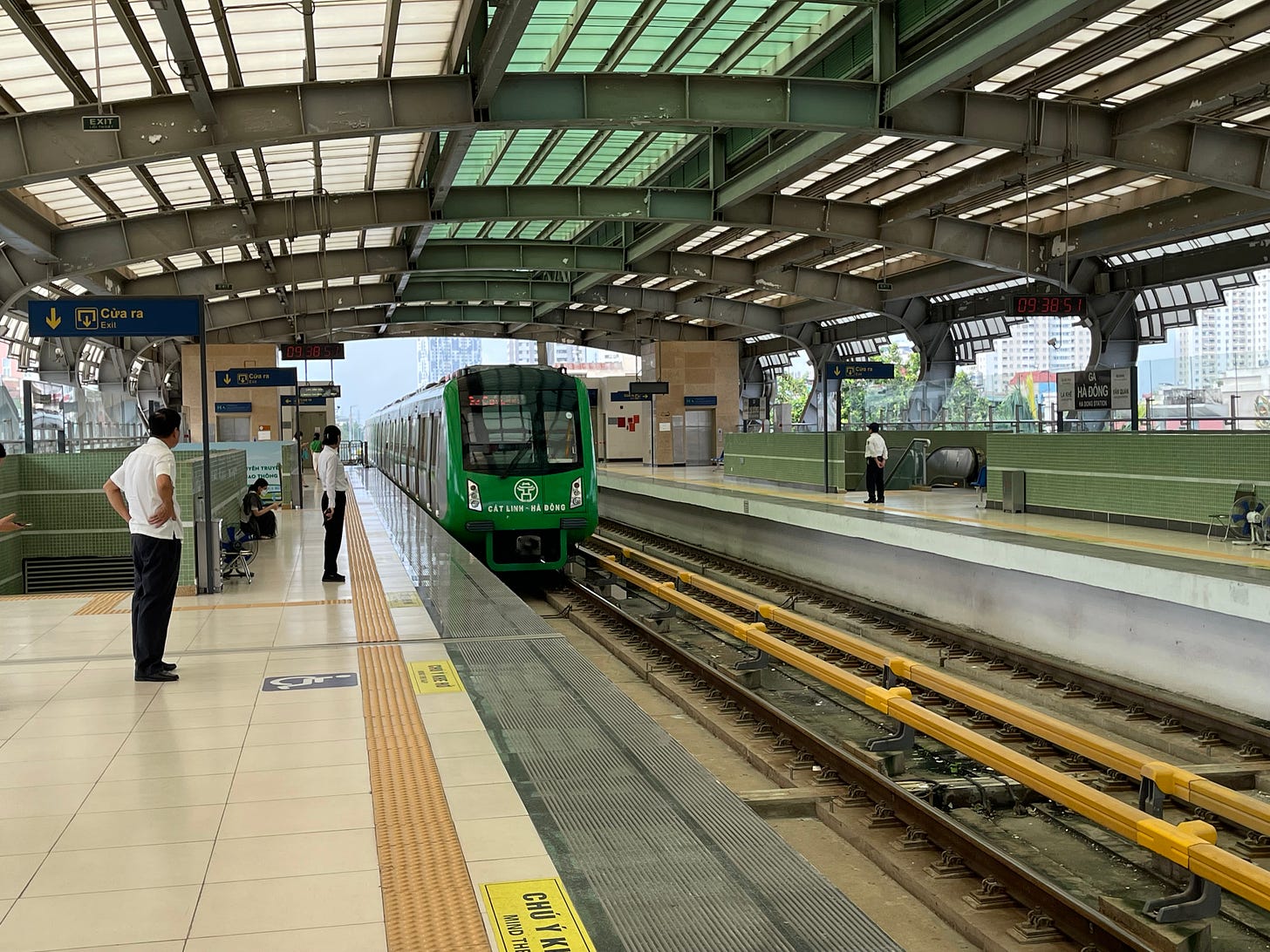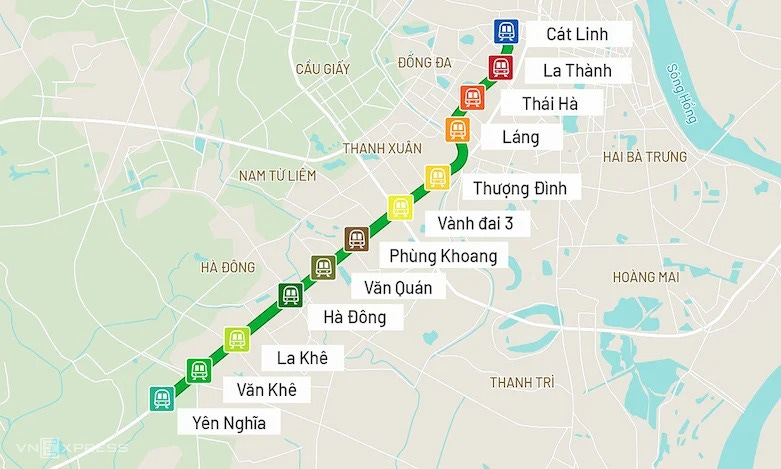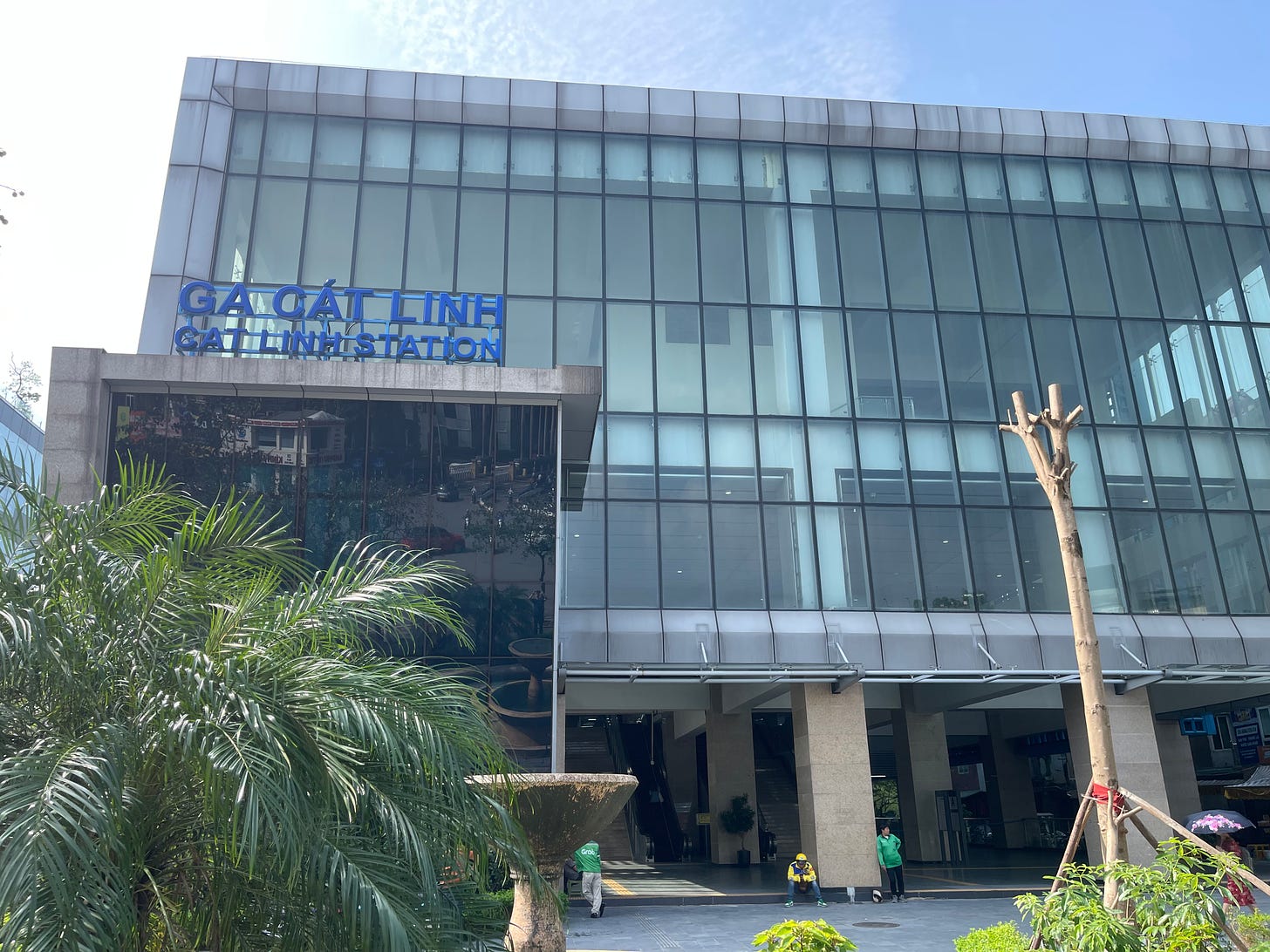Good morning! Welcome to the latest edition of the Vietnam Weekly exclusively for paying subscribers, written by Ho Chi Minh City-based reporter Mike Tatarski. Readers of the free edition of the newsletter will see a preview of this article - to access it and all future weekly exclusive stories, upgrade below.
Group subscriptions are also available at a 30% discount per reader.
Due to the photos, this post may be too long to fully show in your inbox - if that’s the case, click ‘expand’ at the bottom.
On to the news.
Long-time Vietnam Weekly readers are aware of the infrastructure-heavy tilt the newsletter sometimes takes, though this particular edition wasn’t planned in advance. During an otherwise packed trip to Hanoi late last week, I set aside time to try both of the capital’s operating metro lines.
The elevated Cát Linh - Hà Đông line opened in November 2021 after numerous delays: construction began in October 2011 with completion expected in 2016, while the cost grew from US$553 million to US$868 million.
Largely funded and built by Chinese corporations, it has 12 stations spanning just over 13 kilometers from Đống Đa District southwest to Hà Đông District. I had never ridden it despite visiting Hanoi a few times since then, a testament to the route’s utility (or lack thereof): it’s a 20-minute drive from Tây Hồ or Hoàn Kiếm to the nearest station, meaning the line is essentially useless for people on the eastern side of Hanoi.
Once you’re there, the passenger experience is straightforward though, incredibly, the ticket machines are cash only, even in the year 2024 with the Vietnamese government pushing for a cashless economy. Tickets are cheap - VND13,000 to ride almost the entire route one-way, though this isn’t as cheap as a public bus.




